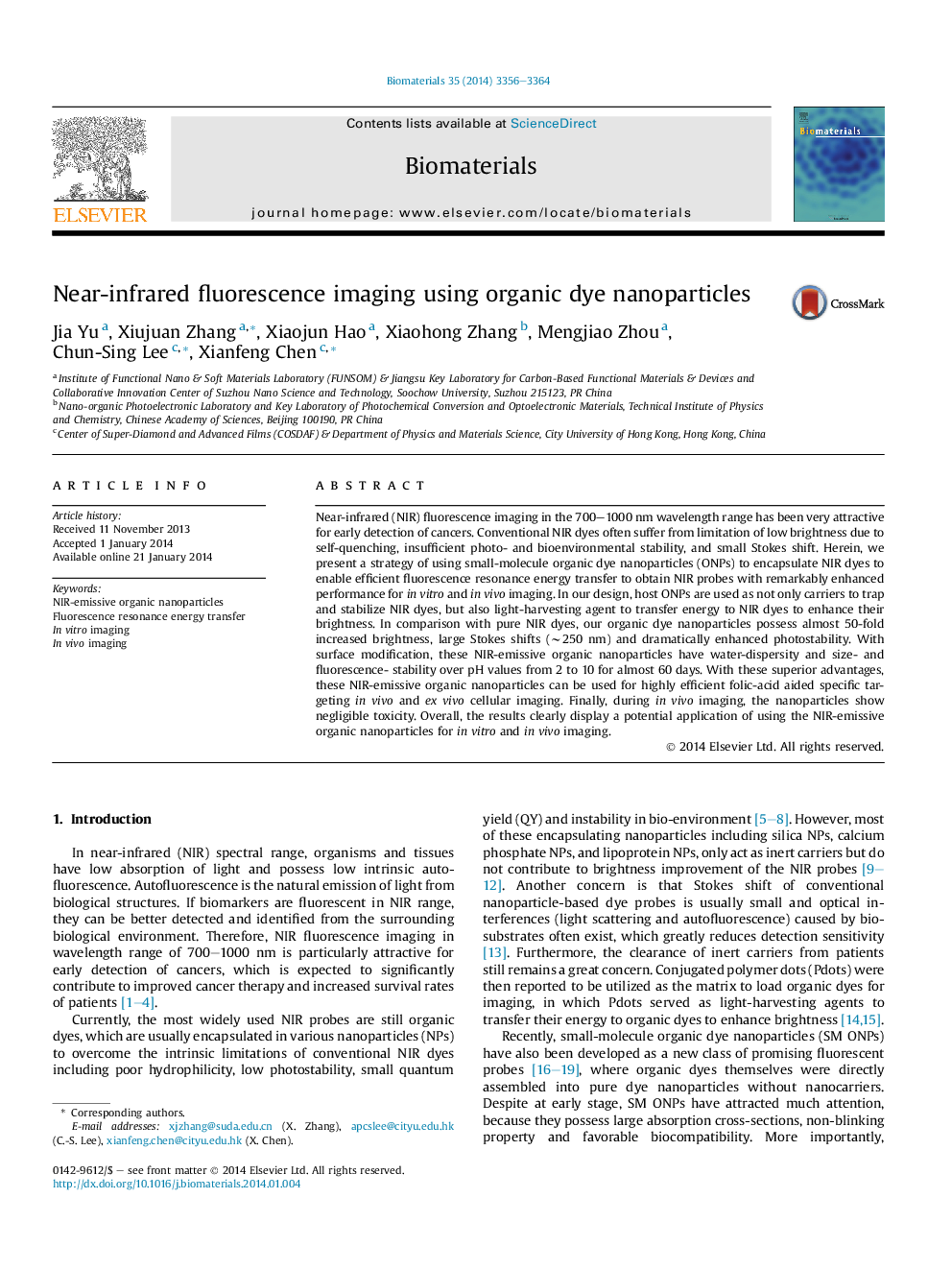| Article ID | Journal | Published Year | Pages | File Type |
|---|---|---|---|---|
| 10227951 | Biomaterials | 2014 | 9 Pages |
Abstract
Near-infrared (NIR) fluorescence imaging in the 700-1000 nm wavelength range has been very attractive for early detection of cancers. Conventional NIR dyes often suffer from limitation of low brightness due to self-quenching, insufficient photo- and bioenvironmental stability, and small Stokes shift. Herein, we present a strategy of using small-molecule organic dye nanoparticles (ONPs) to encapsulate NIR dyes to enable efficient fluorescence resonance energy transfer to obtain NIR probes with remarkably enhanced performance for in vitro and in vivo imaging. In our design, host ONPs are used as not only carriers to trap and stabilize NIR dyes, but also light-harvesting agent to transfer energy to NIR dyes to enhance their brightness. In comparison with pure NIR dyes, our organic dye nanoparticles possess almost 50-fold increased brightness, large Stokes shifts (â¼250 nm) and dramatically enhanced photostability. With surface modification, these NIR-emissive organic nanoparticles have water-dispersity and size- and fluorescence- stability over pH values from 2 to 10 for almost 60 days. With these superior advantages, these NIR-emissive organic nanoparticles can be used for highly efficient folic-acid aided specific targeting in vivo and ex vivo cellular imaging. Finally, during in vivo imaging, the nanoparticles show negligible toxicity. Overall, the results clearly display a potential application of using the NIR-emissive organic nanoparticles for in vitro and in vivo imaging.
Related Topics
Physical Sciences and Engineering
Chemical Engineering
Bioengineering
Authors
Jia Yu, Xiujuan Zhang, Xiaojun Hao, Xiaohong Zhang, Mengjiao Zhou, Chun-Sing Lee, Xianfeng Chen,
